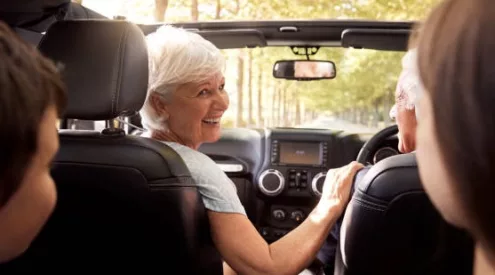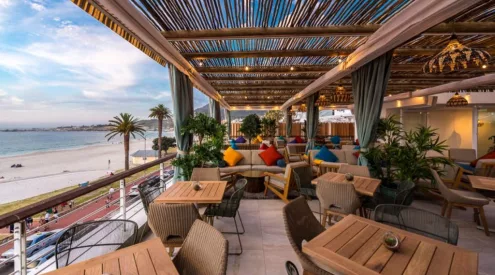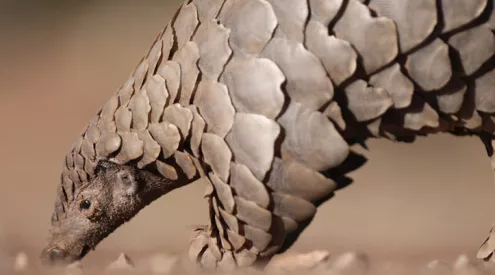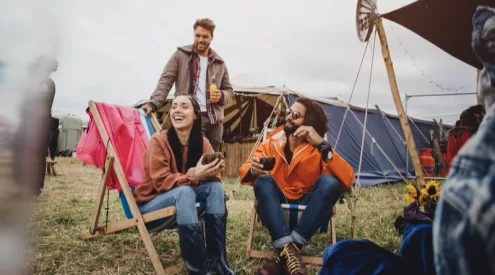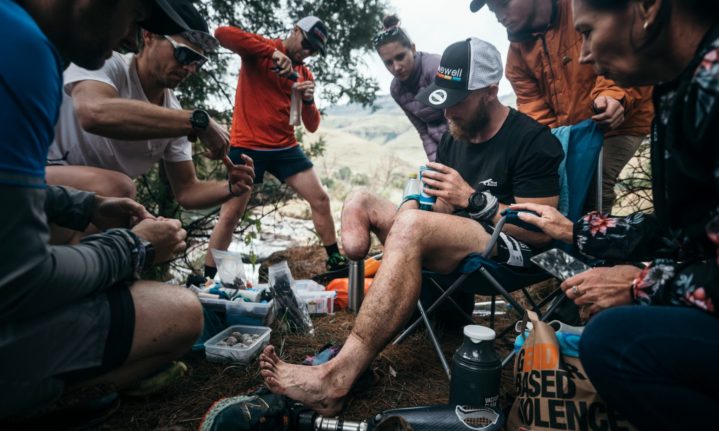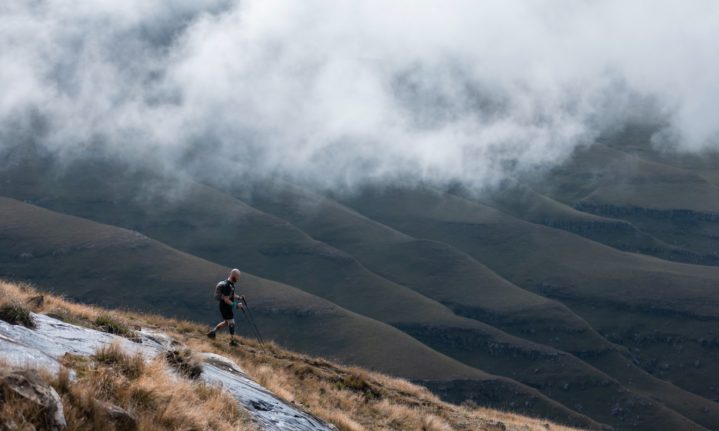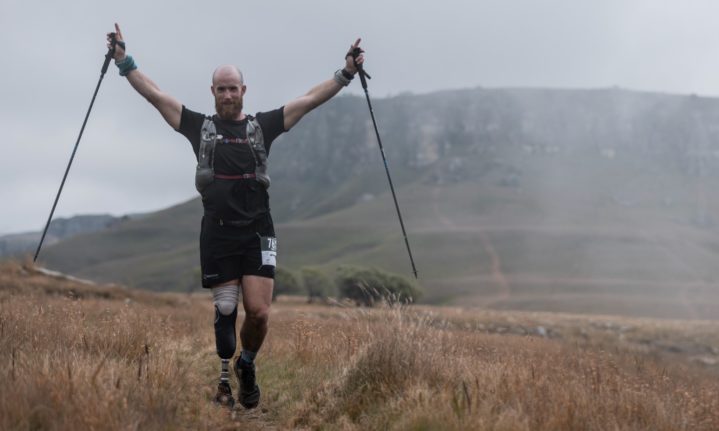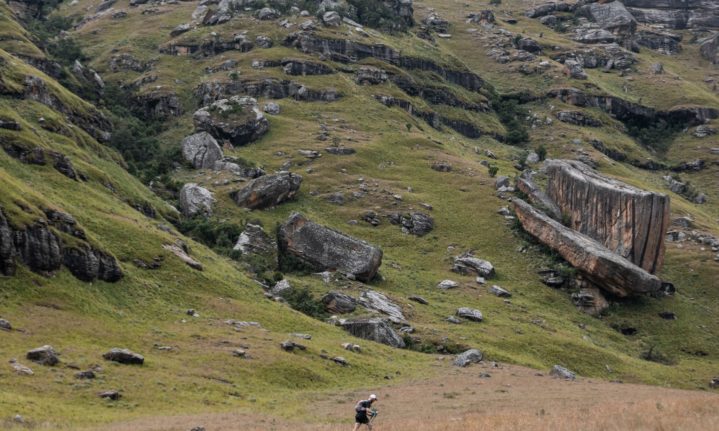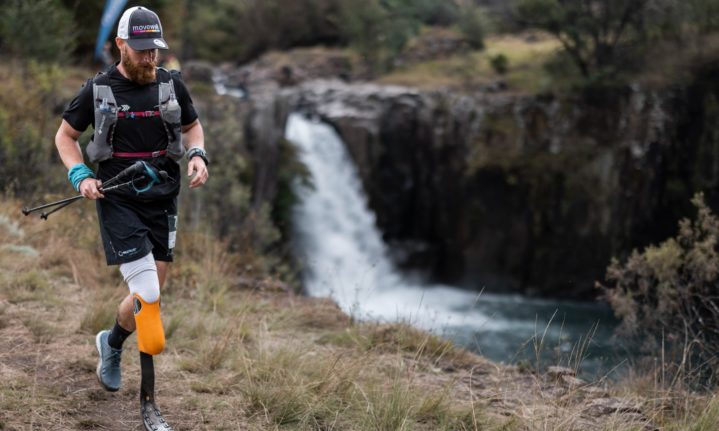Personal trainer, biker, ultra-marathon trail runner, swimmer and all-round thrill-seeker Travis Warwick-Oliver had racked up an impressive cross-discipline sports record when a motocross injury in 2020 led to the loss of one of his legs. An adrenaline junkie to the core, he came back harder and tougher, refusing to let go of his dreams.
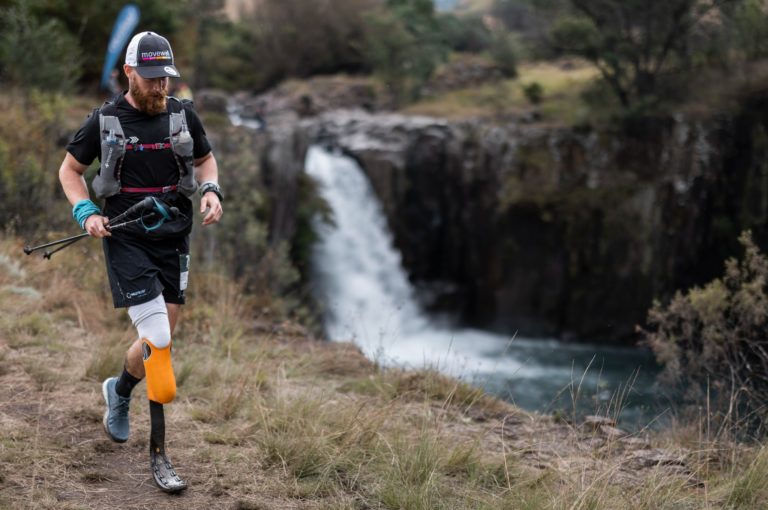
Ultra Trail Drakensberg. Photo by Alexis Berg.
It usually takes up to a year just to return to “day to day” activities but I was about to run 160km in the Ultra-Trail Drakensberg (UTD). I felt like I had achieved something huge, just by standing at the starting line – it was just 14 months since I’d had my right leg amputated below the knee.
It’s crazy to think how far I’ve come since my motorbike accident in March 2020. That was surreal; I went to hospital, came out a few days later, but in the meantime, the country had gone into hard Lockdown. It felt like a zombie apocalypse on that drive home from the hospital. I had two more surgeries but was told I would never run again. I refused to accept that and ended up having five more quite painful surgeries but when it became clear that my foot wasn’t going to heal, we started discussing amputation.
I did as much research as I could and I wanted to talk to some sporting amputees but in South Africa, there aren’t many. Eventually I met Chris Hearn, an SA BMX rider and an amputee. When we met, I was struggling to get around on my injured foot and he just hopped out of his car and basically ran down the road on his prosthetic, and in that moment I decided to go ahead with the amputation.
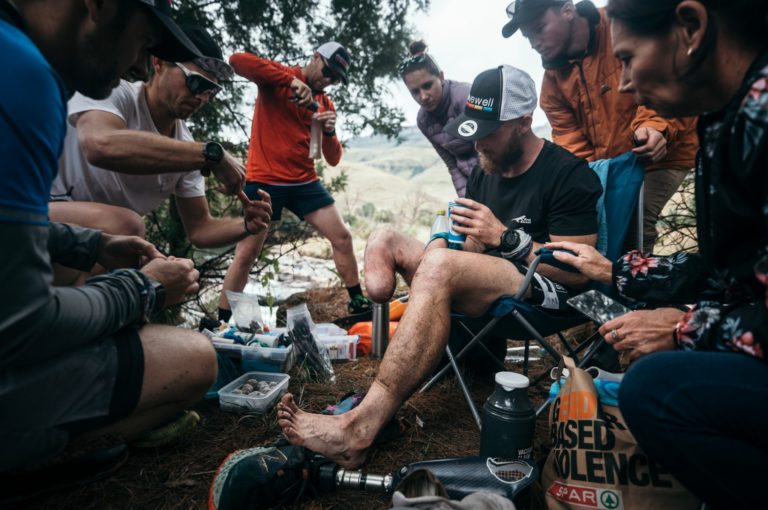
I’d spent a lot of time training but being the only ultra-distance blade runner in the country meant I was learning as I went along. When I couldn’t run, I would swim, and in February I did the Midmar 16-miler for charity. That’s 16 miles in one go! With that event ticked off the list, my focus was on UTD.
It started off well, I’d pass lots of people and then I’d have to stop, tend to my stump, drain all the sweat and put my leg back on, then I’d pass more people and have to repeat the process. By the time I got to the Black Mountain section, I was starting to come up with all sorts of excuses to stop. And I was the only amputee in that race, who was going to argue with me? But every time I stopped, I got so much encouragement from my friends and family and I’d find a way to keep going.
Eventually, I had lost so much volume from sweating so profusely that my prosthesis wasn’t fitting properly on my stump, so I had to wear extra volume socks to make it fit. I was switching between my running blade and my walking leg but the terrain wasn’t really ideal for either in some parts. After 35 hours, I was so exhausted I had to stop and take a 20-minute nap. I had already run 142km; I only had 18km to go but I just needed to rest.
Obviously, the sleeping conditions weren’t ideal, and I ended up sleeping at an angle that caused a rush of blood to my stump. It was so badly blistered already, and when I woke up it was so swollen that I struggled to get my blade on. I walked a few metres but the pain was intense. It was late on the Saturday night and I finally had to make the decision to pull out. I only had 18km to go but it just wasn’t possible. The worst part was I felt and looked a lot better than some of the guys coming through; I felt strong enough to do it but with the blistering and the swelling, I was in too poor a condition. I didn’t know what to do with myself. I asked my girlfriend, ‘What do I do now? Just push stop on my watch and that’s it?’ I’ll be back next year though.
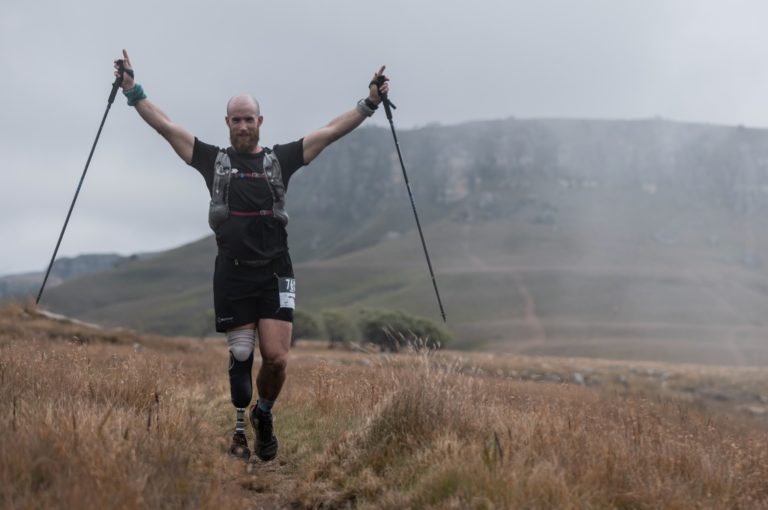
Five things in Travis’ backpack
I pack a rag and cleaner that I make myself in a spray bottle filled with a mix of Dettol and melted Dove soap.
I always have duct tape, in case I need to seal or fix anything on the prosthetic.
I need a number 4 Allen key to make adjustments.
There’s always alcohol in my bag, but not the fun kind! I pack surgical spirits in case I need to sterilise anything.
Lastly, I pack a spare blade that’s geared for different terrain.
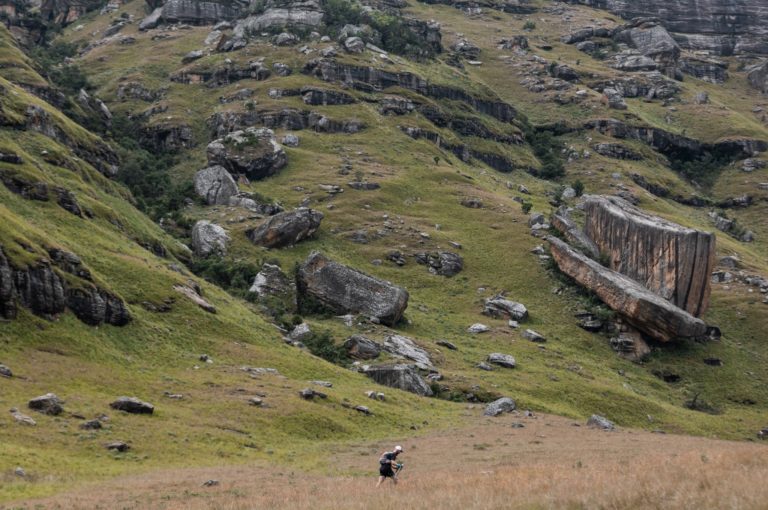
Rejuvenate SA
Travis says the cost of being an amputee is ‘insane’. To pay for the operation that started his prosthesis journey, his dad sold a motorbike. ‘In the 18 months I’ve been an amputee, I’ve had five different prosthetics. My walking leg and my running blade cost over R300 000, and each time I’ve had to have a socket refitted, it has cost between R10 000 and R50 000.’
His personal experience with the costs involved is what prompted Travis to start Rejuvenate SA, an NPO that raises funds to provide prosthetic limbs, wheelchairs, crutches and other mobility aids for those in need. ‘We try to help people who need help with mobility. Most medical aid schemes only cover a small fraction of the cost, if at all. We’re raising funds at the moment for a nine-year-old girl who has been an amputee since she was 11 months old. We’re funding a running blade for her, which is going to cost upwards of R100 000. With the money I raised running the UTD, we were able to get a 4×4 wheelchair for Joy Mzolo, who has brittle bone disease. At the moment we rely on donors. It’s tough, because a prosthetic that fits someone now might not fit six months down the line, so the costs involved are always changing.’
Donate by visiting rejuvenatesa.com/donate
This article originally appeared in the August 2022 print issue of Getaway
Interview by Lauren Dold
Photographs by Alexis Berg
Follow us on social media for more travel news, inspiration, and guides. You can also tag us to be featured.
TikTok | Instagram | Facebook | Twitter
ALSO READ: Karoo enchantment: things to do in Nieu-Bethesda


